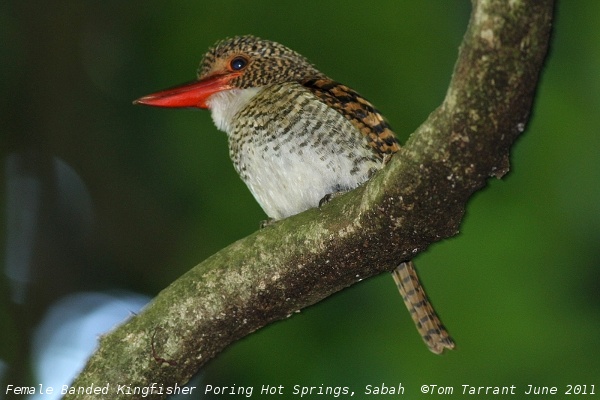Distinguishing features
The Banded Kingfisher has a sturdy red bill and a short crest which is slowly raised and lowered. It shows striking sexual dimorphism compared to most of its relatives. The adult male has a chestnut forehead, cheeks and nape, and a bright blue cap. The rest of the upperparts, wings and tail are black with blue bands. The breast, flanks and undertail are rufous, and the central belly is white.
The adult female is equally striking, with black-and-rufous-banded upperparts, and white underparts with some black bars on the chest and flanks.
Young birds are duller than the adult of the same sex, have a brown and orange bill, and dusky barring on the underparts. (Wikipedia)
Size
- Up to 20 cm (Length of specimen)
Wingspan
- Wingspan data is not yet available.
Synonyms
Distribution
Distribution and habitat preferences
It is a tree kingfisher found in the lowland tropical forests of Myanmar, Thailand, Cambodia, Vietnam, Laos. Malaysia, Sumatra, Java and Brunei. It is extinct in Singapore.
This is a bird of lowland rainforest found up to 1700 m in Brunei, but normally below 1100 m altitude in the rest of its range. Unlike most kingfishers, it does not need pools or streams in its territory. (Wikipedia)
Diet
The Banded Kingfisher hunts large insects and occasionally small lizards, usually taken in the trees, but sometimes from the ground. (Wikipedia)


